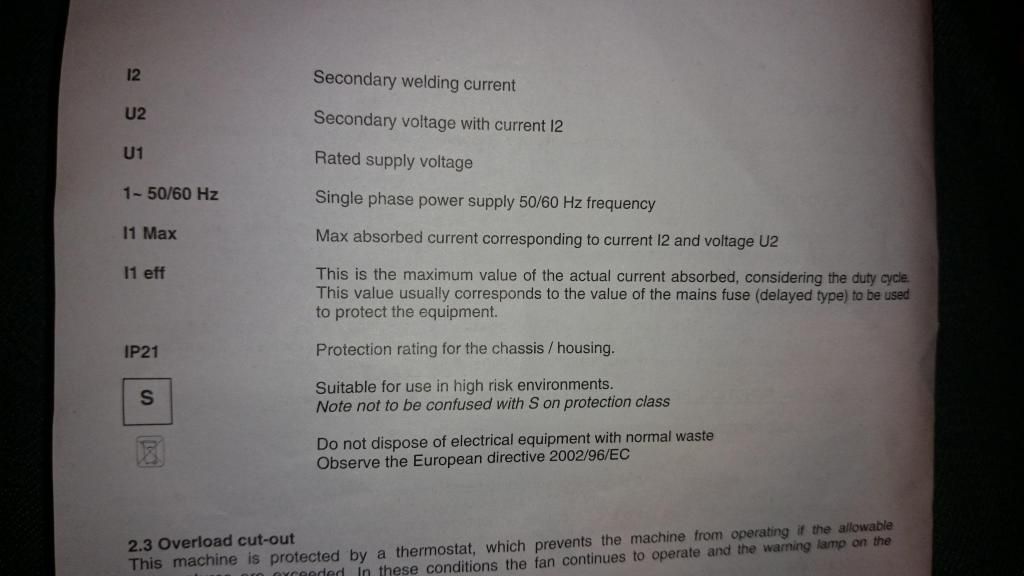

the images are taken from the instruction booklet.

I wonder if any one can help me, in my new workshop i am having issues with the MIG tripping the circuit breaker if the power is put above setting 3
out of six (trips on 4 +).
A little background information, the main supply comes from an independent 60A fused consumer unit, linked by 16mm2 cable to a "BG Garage Kit
Enclosure 5-Module IP55 40A RCD Dual 6A & 32A MCB" the 6A & 32A MCB's have been replaced with a "BG MCB 16A C Type" this
then leads to a "MK Commando Interlocked Angled Socket 2P+E 16A 200-250V (IP44)" connected by 2.5mm2 twin core cable(+earth).
The MIG is a new Snap-on PRO MIG 187 i believe it is 180A max output.
Any advice or hints as to the reason this machine may be tripping the circuit is greatly appreciated. also if you need any more information please
feel free to ask. Thanks for reading.
What load does the mig draw?
the maximum current absorbed is 16A I belive
Are you sure that's the case? I had a quick browse online and the 125amp mots needed 20 amps!
If the cable is 2.5mm you could uprate the 16amp mcb to a 20 amp type c. But without upgrading the supply to the mig then you can't go any
higher!
the instruction manual states that it is a maximum draw of 16A, i will get a 20A MCB and see if that sorts the issues out, thanks for the reply.
does it trip as soon as you pull the trigger or after a few seconds / 10's of seconds?
The instance the trigger is pulled.
I was double checking my instruction book and it appears to say the maximum absorbed current is 13A i believe i was wrong in previously stating
16A.


the images are taken from the instruction booklet.
Is it "tripping" the RCD or overloading the MCB ?
The MCB, the RCD is fine.
Dont MCBs come in B,C and D type. Where B is suitable for basic resistive loads and D for big inductive loads or something similar with big in rush
currents
Could it be that you need a D range with a bit more spark-up tolerance?
http://www.neweysonline.co.uk/MCBs/Static.raction
The d range ones are for big transformers which is ultimately what your welder is?
Agreed high inrush currents at start up could trip a C type breaker. D types are much better at coping with this start up ( some folk call them motor rated breakers). But bear in mind the fault trip current is higher and the time taken to trip will be longer in an emergency/fault situation.
Typically a B type will trip on overloads of 3-5 x rated current,
C type 5-10 x and D type 10-20 x over a set duration